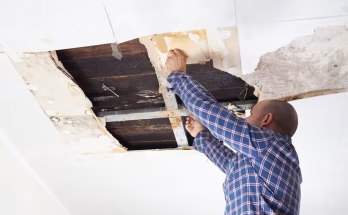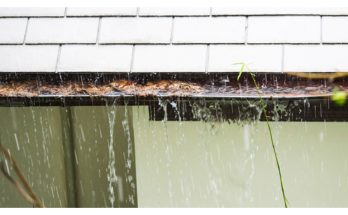Maintaining a sparkling clean pool year-round is a priority for any pool owner, but the changing seasons present unique challenges that can impact your pool cleaners’ performance. From heavy leaf fall in autumn to pollen buildup in spring, seasonal debris and environmental factors demand adjustments to your cleaning routine. By optimizing your pool cleaner’s settings, maintenance, and operation based on the time of year, you can ensure efficient performance, extend the device’s lifespan, and keep your pool inviting. This guide explores how to adapt your pool cleaner’s use for each season, offering practical tips to tackle seasonal challenges while keeping your pool pristine.
Understanding Seasonal Challenges for Pool Cleaners
Each season brings distinct conditions that affect how well a best pool cleaner operates. In spring, pollen, flower petals, and budding tree debris can create a fine layer of sediment that tests a cleaner’s filtration capabilities. Summer often means heavier pool use, with sunscreen, body oils, and grass clippings adding to the debris load. Autumn is notorious for falling leaves, twigs, and acorns, which can clog filters or overwhelm suction systems. Winter, especially in colder climates, may involve reduced pool use but increased algae growth or debris from storms. Understanding these challenges is the first step to optimizing your pool cleaner’s performance.
Pool cleaners—whether robotic, suction-side, or pressure-side—rely on efficient filtration, navigation, and suction to keep your pool clean. Seasonal changes can strain these components, so tailoring your approach ensures your cleaner works effectively year-round. Below, we’ll break down strategies for each season, focusing on adjustments to settings, maintenance, and complementary cleaning techniques.
Spring: Tackling Pollen and Fine Debris
Spring is a season of renewal, but for pool owners, it often means dealing with pollen and fine organic debris. These particles are lightweight and can float on the water’s surface or settle at the bottom, making them tricky for some cleaners to handle. To optimize your pool cleaner in spring:
- Adjust Filtration Settings: If your cleaner has adjustable filtration settings, opt for a finer mesh filter or cartridge designed for small particles. Fine debris like pollen requires a filter with a smaller micron rating (e.g., 50-100 microns) to trap particles effectively.
- Increase Cleaning Frequency: Run your cleaner more frequently, such as daily or every other day, to prevent pollen buildup. For robotic cleaners, program shorter, more frequent cycles to avoid overloading the filter.
- Skim the Surface First: Use a manual skimmer net to remove floating debris before running the cleaner. This reduces strain on the cleaner’s filtration system and ensures it focuses on submerged particles.
- Check Water Chemistry: Spring rain can dilute pool chemicals, leading to algae growth. Test and balance pH, chlorine, and alkalinity levels to prevent cloudy water, which can clog filters.
Regularly clean the filter after each cycle, as fine debris accumulates quickly. For suction-side cleaners, ensure the pool’s main filter and pump are clear to maintain strong water flow.
Summer: Managing Heavy Use and Organic Residues
Summer brings peak pool usage, with swimmers introducing sunscreen, body oils, and grass clippings into the water. High temperatures can also accelerate algae growth, especially in poorly maintained pools. To keep your cleaner performing optimally:
- Extend Cleaning Cycles: With increased debris from swimmers, program longer cleaning cycles (e.g., 2-3 hours for robotic cleaners) to thoroughly clean the pool’s floor, walls, and waterline. For pressure-side cleaners, ensure the booster pump is running efficiently.
- Focus on the Waterline: Sunscreen and oils often leave a greasy ring along the pool’s waterline. If your cleaner has a waterline cleaning feature, enable it or manually scrub the area to assist the cleaner.
- Monitor Filter Capacity: Organic residues can clog filters faster in summer. Check and clean the filter or bag after each use, and consider using a secondary filter for heavy debris loads.
- Maintain Pool Circulation: Run the pool pump longer during summer to improve water circulation, which helps the cleaner navigate and collect debris more effectively.
Hot weather can also strain a cleaner’s motor, so store the device in a shaded, cool area when not in use to prevent overheating.
Autumn: Handling Leaves and Heavy Debris
Autumn is the most challenging season for pool cleaners due to falling leaves, twigs, and other heavy debris. These larger items can clog filters, jam impellers, or disrupt navigation. To optimize performance:
- Use a Leaf Canister: For suction-side or pressure-side cleaners, attach an in-line leaf canister to trap large debris before it reaches the cleaner or pool filter. Empty the canister regularly to maintain suction.
- Shorten Cleaning Cycles: Run shorter, more frequent cycles to prevent the cleaner from becoming overwhelmed by heavy debris. For robotic cleaners, select a floor-only cleaning mode to focus on the pool bottom, where leaves tend to settle.
- Pre-Clean with a Net: Manually remove large leaves and twigs with a leaf net before running the cleaner. This reduces wear on the cleaner’s components and improves efficiency.
- Inspect Navigation Patterns: Heavy debris can disrupt a cleaner’s navigation, especially for robotic models. Ensure sensors or wheels are free of obstructions, and clear the pool of floating debris to avoid tangling.
If your pool is surrounded by trees, consider installing a pool cover during peak leaf-fall periods to reduce debris accumulation, allowing the cleaner to focus on smaller particles.
Winter: Preventing Algae and Managing Storms
In winter, pool usage may decrease, but storms, wind, and reduced sunlight can lead to algae growth or debris from nearby trees. In colder climates, some owners close their pools, but for those keeping pools open:
- Reduce Cleaning Frequency: If debris is minimal, run the cleaner less often (e.g., once or twice a week) to save energy while maintaining water clarity. Adjust robotic cleaner schedules to match reduced debris loads.
- Combat Algae Growth: Cold water and low sunlight can promote algae. Run the cleaner in combination with proper chemical treatments (e.g., algaecide and chlorine) to keep the pool clean. Ensure the cleaner’s brushes are effective at scrubbing algae-prone surfaces.
- Protect Against Storms: After storms, remove large debris manually before running the cleaner to prevent clogs. Check the cleaner’s components for damage from grit or sand carried by wind.
- Winterize the Cleaner: If closing the pool, thoroughly clean and dry the cleaner before storing it in a dry, temperature-controlled environment to prevent motor or sensor damage.
For suction-side cleaners, ensure the pool pump is winterized to maintain water flow, as frozen or clogged pipes can reduce performance.
General Maintenance Tips for Year-Round Performance
Regardless of the season, regular maintenance is key to keeping your pool cleaner in top shape. Clean the filter or bag after every use, inspect hoses or cords for wear, and check brushes or wheels for trapped debris. For robotic cleaners, update software or firmware if available to improve navigation and efficiency. Store the cleaner properly to protect it from extreme heat, cold, or moisture, and always follow the manufacturer’s guidelines for maintenance.
Complementary Tools and Techniques
To enhance your cleaner’s performance, consider complementary tools like skimmer nets, leaf canisters, or pool brushes for manual touch-ups. Regularly test water chemistry to prevent issues like algae or scale buildup, which can hinder the cleaner’s effectiveness. A well-maintained pool pump and filtration system also support the cleaner by ensuring proper water flow and clarity.
Conclusion
Optimizing your pool cleaner’s performance for different seasons requires a proactive approach to maintenance, settings, and complementary cleaning strategies. By adapting to spring’s pollen, summer’s organic residues, autumn’s heavy leaves, and winter’s algae risks, you can keep your pool cleaner running efficiently and your pool inviting year-round. Regular filter cleaning, adjusted cycle times, and manual pre-cleaning are small steps that make a big difference. With these tips, your pool cleaner will be ready to tackle any season, leaving you more time to enjoy your sparkling clean pool.




